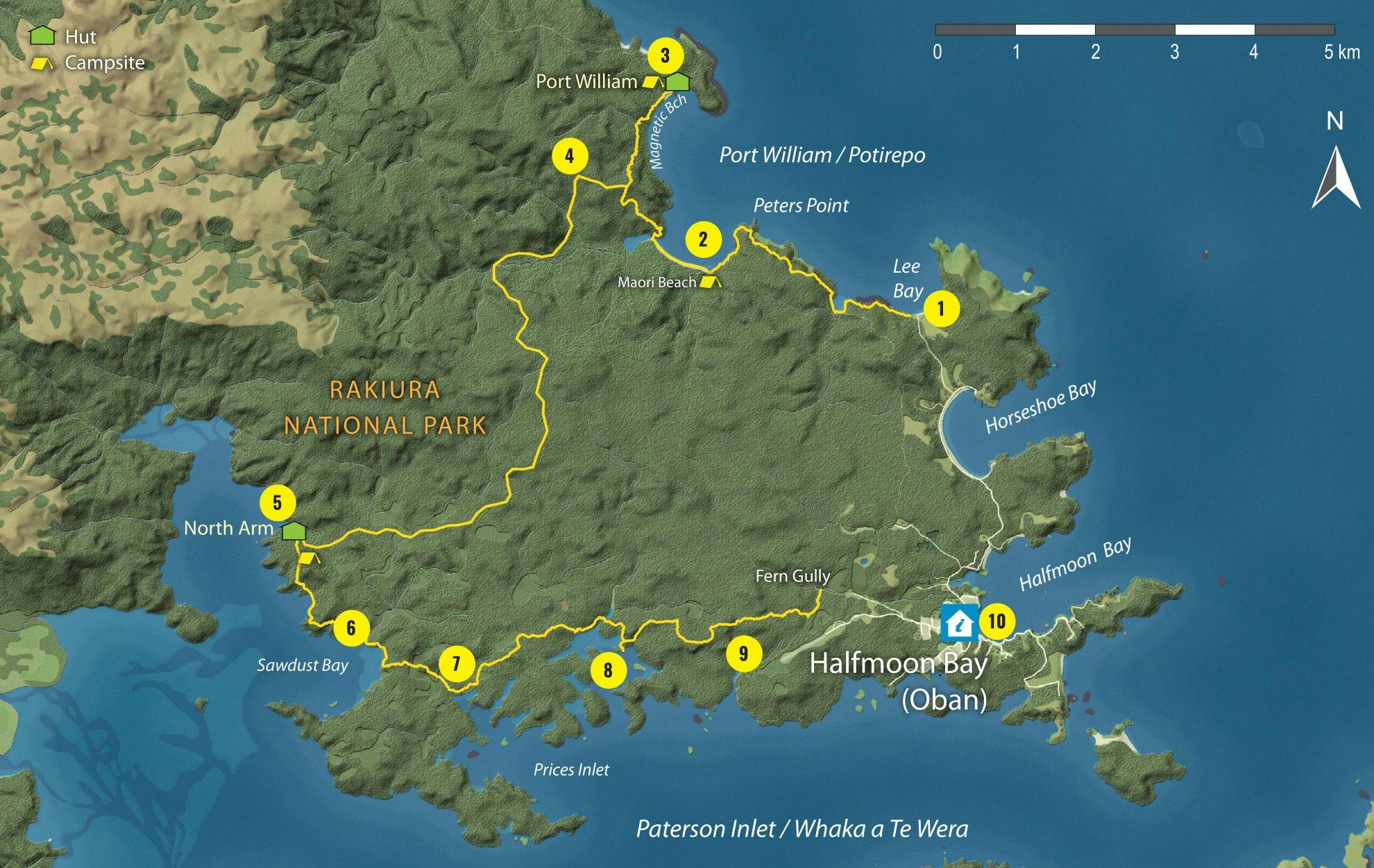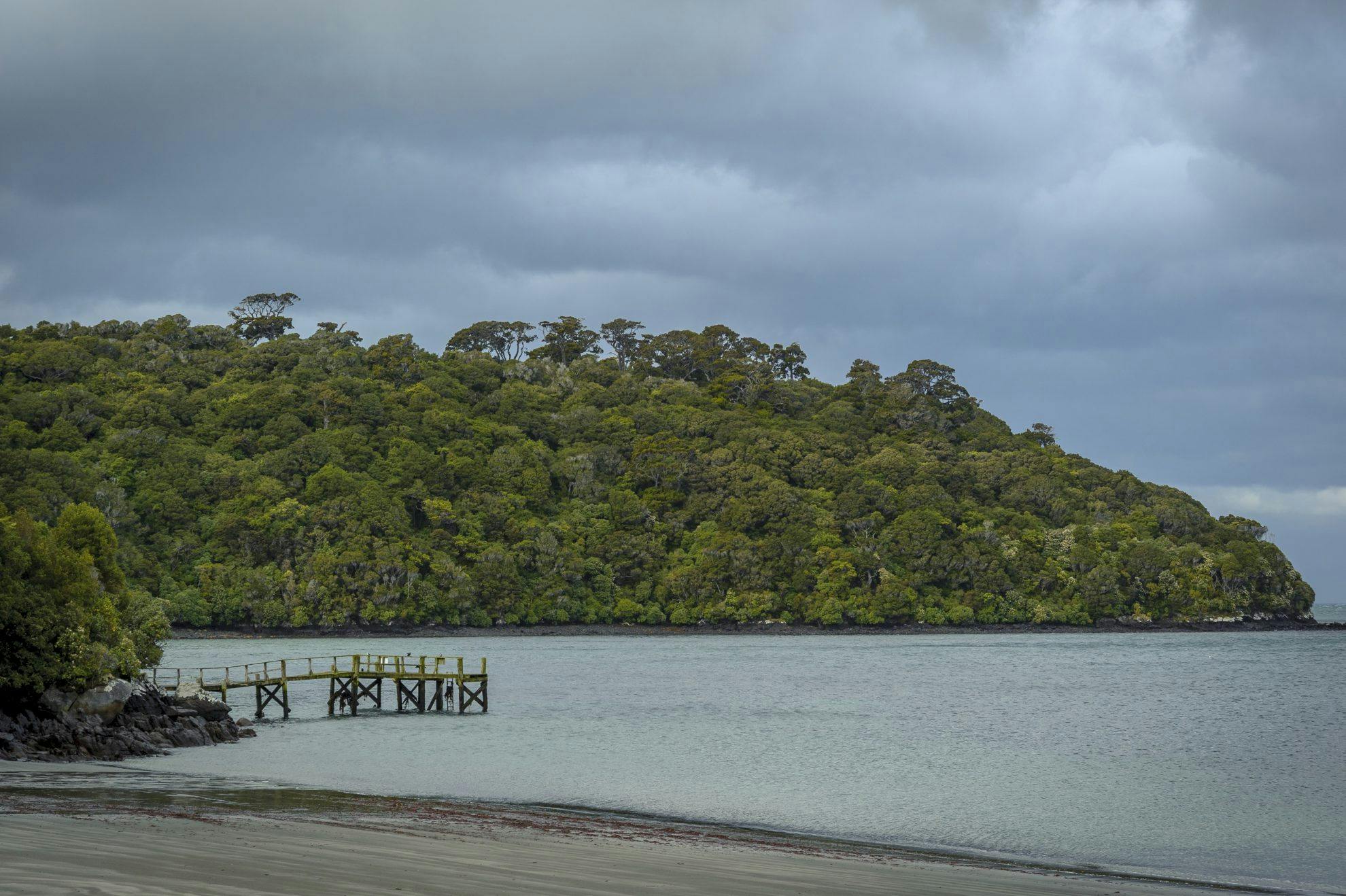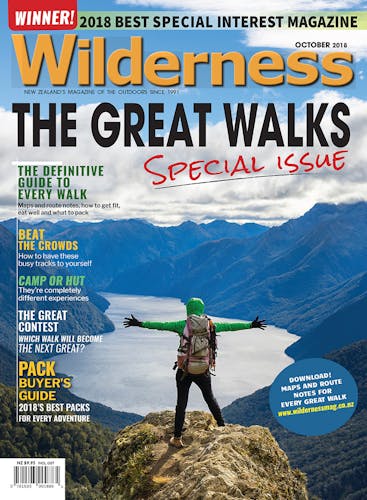Beaches, birdlife and bountiful forest, the Rakiura Track is the best way to experience Stewart Island.
For a country with tens of thousands of kilometres of coastline, it’s somewhat surprising we have so few multi-day tramps along shorelines. Only two other Great Walk feature coastal scenery – the Heaphy and Abel Tasman. Rakiura/Stewart Island offers wild coastlines aplenty, but most are infamous for their length, difficulty and mud. So when DOC decided to develop existing tracks to make the three-day Rakiura Track, it created a new, easier and shorter opportunity for trampers visiting our third largest island.
Undoubtedly, it’s the two coastal sections that form the highlight. The second day forms a necessary but rather uninspiring link between the two coastlines.
1. Lee Bay sculpture
Rakiura is known as the anchor
stone of Maui’s canoe, used to secure his waka when he and his brothers fished up Te Ika a Maui, the North Island. So appropriately enough, a large chain sculpture at Lee Bay marks the start of the Rakiura Track; one that mirrors a similar sculpture across Foveaux Strait at Bluff. The track sidles, giving teasing glimpses of the sea through manuka stands before reaching an estuarine inlet at Little River.
2. Maori Beach and sawmill relics
More sidling through forest on the benched track leads past Peters Point and into Wooding Bay, where trampers are usually pleased to finally be walking along a sandy beach. As well as a campsite and shelter, there’s a well-preserved engine and boiler to mark the days when a sawmill operated here.
3. Port William Hut
From Maori Beach, the track crosses an estuary over a large footbridge before a climb past a headland to a track junction. From here, walkers head north to Port William Hut, set in a sheltered bay distinguished by large gum trees. These are the sole relics left by 24 settlers from the Shetland Islands who endured a miserable existence trying to establish homes and industry here during 1871. Most lasted less than a year. That the Shetlands proved a more cheerful place says a lot about the damp, mud and oppressive forest they faced at Port William.

4. Log haulers
Back at the track junction, the second day of the track begins its long push through forest, which connects the northern coastline with the shores of Paterson Inlet. Most of the forest is not majestic, perhaps because a lot of it was milled early in the 20th Century, and combined with a lack of views, the walk is rather tedious. However, the restored log hauler at a former milling site provides a point of historical interest.
5. North Arm Hut
It’s with some relief that you finally reach the coastline of North Arm. The hut has a deck and windows positioned to overlook this large bay of Paterson Inlet and makes a pleasant place to linger. At low tide, it’s worth exploring the shoreline, fringed by wind-twisted trees beside Stewart Island’s largest harbour.
Reader Tip:
“Get out on the trail early, before everyone else.
I left before 7am and the track was quiet and there
was plenty of time to hang around watching for
kiwi and enjoying
the beautiful bush.”
– Heather Evans
6. Sawdust Bay
The last day traverses the northern edge of Paterson Inlet, at least where it’s possible for such a convoluted shoreline. After wending through forest, the track emerges at Sawdust Bay. So much saw-milling activity occurred here that once the sheer volume of sawdust killed all the marine life in the bay. Nowadays, clean waves wash around granite boulders projecting from the seafloor.
7. Historic Dam
A brief climb over a low, forested ridge leads to the site of another sawmill, and the remains of an earth dam once used to operate a water wheel. Milling ceased in 1929, but not before several boats were built here. Since then, fern and forest have reclaimed the area.
8. Kaipipi Bay and Burial Island
Near Kaipipi Bay, a footbridge crosses a tidal arm of the inlet, before the track reaches the shore again. Here a viewpoint offers vistas over this lovely inlet, and the curiously named Burial Island. Beyond, the Rakiura Track heads inland, now following part of an historic road. It ends at Fern Gully and Main Road.
9. Ryans Creek Track
This track follows the shoreline of Paterson Inlet past Cow and Calf Points, with views of the Faith, Hope and Charity islands, and offers an alternative route to Halfmoon Bay.
10. Halfmoon Bay/Oban
Halfmoon Bay is an apt name for the sweep of golden sand alongside Rakiura’s only settlement. It’s worth spending an extra day here to walk the Akers Point and Observation Rock tracks, or to visit predator-free Ulva Island – home to South Island saddleback.
When to walk
Driest period: July-September (less than 125mm of rain)
Wettest period: January and May (more than 150mm of rain)
Warmest month: January (9.7-17.3°C)
Coldest month: July (2.6-9.7°C)
Quietest period: From June to August, numbers range from just 12 to 24 each month.
March is the busiest month (682 people), while November and April are significantly quieter, attracting about 230 people.
Best time: August
It’s a gamble, but mid-winter is one of the quietest and driest periods, while temperatures seldomly dip below zero, and the average high is a comfortable walking temperature of 10.6°C.
Temperature and rainfall figures are monthly averages from the Oban weather station. Tramper numbers from DOC data from the 2016/17 season.
- Distance
- 32km
- Total Ascent
- 1115m
- Grade
- Easy
- Time
- 3 days. Lee Bay to Port William Hut, 3-4hr; To North Arm Hut, 6hr; To Fern Gully car park, 4.5hr
- Accom.
- Port William Hut (24 bunks), North Arm Hut (24 bunks), three campsites
- Access
- From Lee Bay
GPX File
- Rakiura Track (gpx, 36 KB)
GPX File
- Your device does not support GPX files. Please try a different device.








